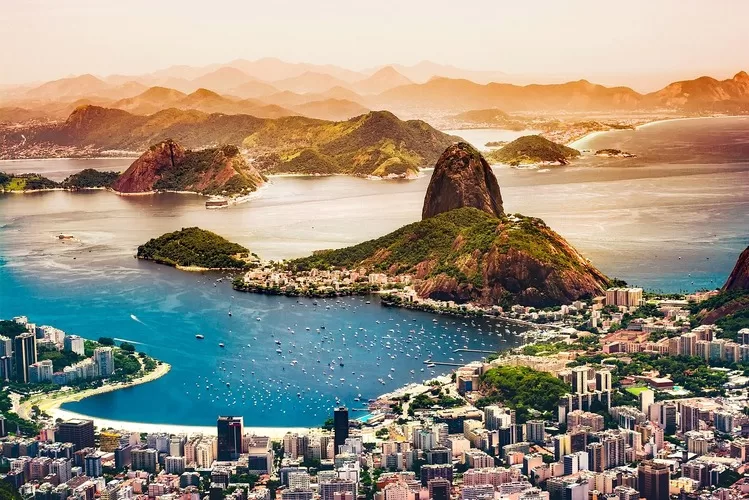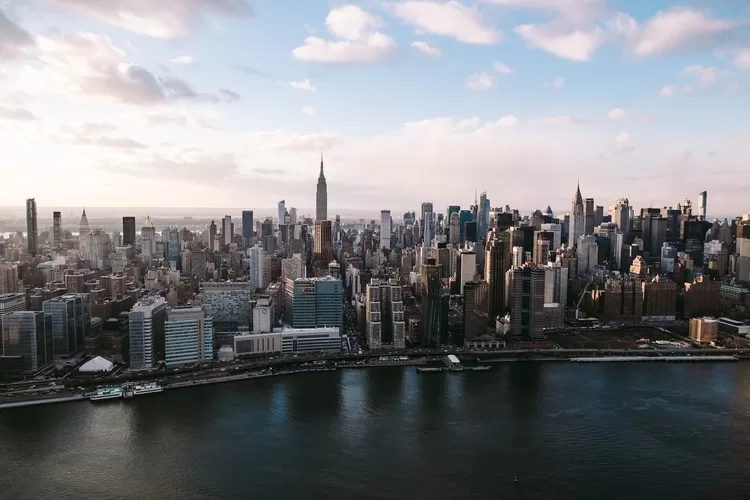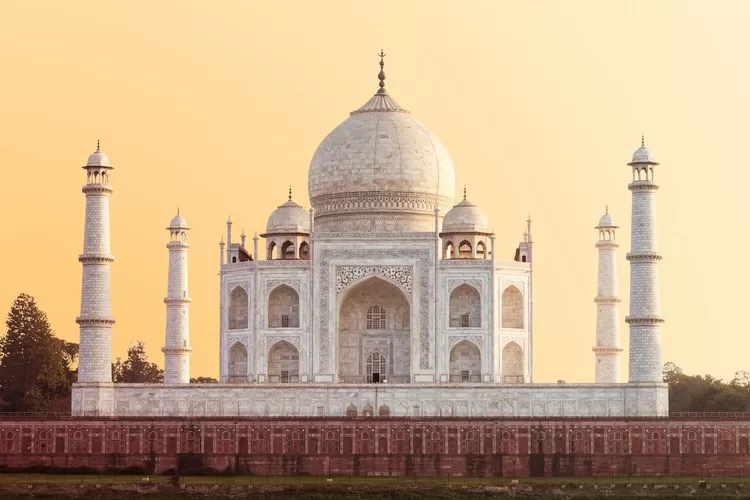There are billions of people on the globe, and each one has a story to tell that adds to the larger fabric of human history. The top 10 most populated countries are at the center of this international drama. These countries are each enormous and unique, yet together they are determining the future of our planet. These countries are more than simply numbers; they represent thriving ecosystems of culture, history, and narrative, and together they include more than half of the world’s people.
From the crowded streets of India, where languages change with every state and history intertwines with modernity, to the huge expanse of China, a civilization with an ancient past and a persistent push toward the future, these nations are epicenters of human existence and culture. The United States, a country built on a foundation of immigration, creativity, and aspirations, and Indonesia, an archipelago of islands with their own distinct cultures, both rank highly. Pakistan, with its storied history, and Nigeria, the continent’s beating heart, highlight Africa’s vibrancy. The world is enthralled by Brazil’s stunning landscapes and vibrant culture, while Bangladesh’s ability to persevere in the face of adversity is an inspiration.
Due to its size and population, Russia has always been an important player on the international stage. As a connecting point between North and South America, Mexico displays a vibrant medley of cultural influences and customs. The cultural treasures, societal complexity, and unique difficulties that make each of the world’s top 10 most populous nations a fascinating chapter in the continuous tale of mankind will be revealed as well. Grasping the dynamics of our linked world and recognizing the significant influence these demographic giants have on the international arena requires an understanding of these figures.
Table of Contents
Listed below are the Top 10 most populated countries 2023:
10. Mexico – 128 Million

Mexico, positioned as the 10th most populated country globally in 2023, is a nation of immense cultural richness and historical significance. With a population exceeding 128 million, it represents a vibrant blend of indigenous heritage and Spanish influence, expressed through its art, cuisine, and traditions. Mexico’s demographic landscape is marked by youthful energy, boasting a median age of 30, and a rapid urbanization rate of 88%. This urban transformation has led to the emergence of dynamic and diverse cityscapes, each reflecting the country’s unique character and offering a glimpse into its complex history.
Mexico City, for instance, is not only one of the largest metropolitan areas in the world but also a UNESCO World Heritage Site, showcasing its rich architectural and historical heritage. Moreover, Mexico’s geographical location as a bridge between North and South America enhances its importance on the global stage. It plays a crucial role in regional politics, trade, and cultural exchange, contributing to its dynamic and influential presence in the international arena.
With a vast land area of nearly 2 million square kilometers, a diverse populace, and a complex tapestry of traditions, Mexico continues to be a captivating piece in the mosaic of global demographics—a beacon of cultural diversity, economic potential, and resilience, poised to shape the course of the 21st century.
09. Russia – 144 Million

In 2023, Russia will be the ninth most populated country on Earth. This vast and mysterious area is full of dramatic contrasts and important historical landmarks. Covering around 16 million square kilometers and home to over 144 million people, it is the most populous country in all of Eurasia. This vast area is home to several cultural groups, each adding a unique thread to the tapestry that is modern Russia. Russia has a large landmass but a low population density, thus it has plenty of room for wildness.
This includes the Siberian tundra and enormous woods. Due to low birth rates and emigration, Russia has particular demographic issues, such as a shrinking population. Despite this, 75% of the population lives in metropolitan areas, with major metropolises like Moscow and St. Petersburg serving as thriving economic, cultural, and political hubs. Russia, with a median age of 39, must balance the requirements of an aging society with the potential of its young population.
Russia’s status as a global power with a rich cultural legacy and a complex interaction of tradition and modernity is reflected in the country’s indisputable geopolitical impact on the international stage. Russia’s demographic and geopolitical importance continues to be a subject of attention and debate throughout the world as it negotiates the complexity of the 21st century.
08. Bangladesh – 172 Million

Bangladesh, as the 8th most populated country in the world in 2023, is a nation of remarkable resilience and cultural diversity. With a population of nearly 173 million people inhabiting an area of just over 130,000 square kilometers, it boasts one of the highest population densities globally. This demographic concentration has given rise to vibrant communities, a thriving cultural scene, and bustling cities like Dhaka and Chittagong. Despite its relatively small land area, Bangladesh has played a significant role in South Asia’s history and has a rich cultural heritage, with influences from Hindu, Buddhist, and Islamic traditions.
Bangladesh’s demographic landscape presents both opportunities and challenges. It has made remarkable progress in improving healthcare and education, leading to a gradual decline in fertility rates. The country’s median age of 27 reflects a youthful population that is increasingly urbanizing, with 41% of the population residing in cities. This demographic transformation, accompanied by economic growth, positions Bangladesh as a rising player in the global economy.
However, it also faces issues such as climate change vulnerability due to its low-lying geography and the need to manage urbanization effectively. Bangladesh’s journey as a dynamic, densely populated nation exemplifies the interplay between demographics, culture, and development in the modern world, making it a compelling subject of global interest and study.
07. Brazil – 216 Million

In terms of population, Brazil will be the seventh most populated country in the world in 2023. However, the country’s demographic, cultural, and natural variety are really astonishing. Brazil, home to more than 216 million people, covers most of the South American continent, from the Amazon Rainforest to the bustling metropolises of Rio de Janeiro and So Paulo, and has a coastline that reaches thousands of kilometers. Indigenous cultures, European colonial influences, and waves of immigration, especially from Japan and Africa, have all left their mark on Brazil’s population and culture. Brazil is a cultural superpower because of the way its music, dance, and food reflect its diverse cultural heritage.
Brazil’s population density is low, and the country nevertheless has large stretches of wilderness and thriving metropolises. Economic development and new ideas are likely to emerge from the country’s median age of 34, and the 88% urbanization rate reflects the country’s growing urban change. Brazil has several difficulties, such as reducing socioeconomic inequality, protecting the Amazon rainforest, and adapting to the intricacies of contemporary government.
As a vibrant country perched at the crossroads of tradition and development, Brazil’s demographic and cultural importance continues to affect not just the future of South America but also the worldwide landscape, making it a riveting topic of study and appreciation.
06. Nigeria – 223 Million

Nigeria, the world’s sixth-most populated country in 2023, is a country with tremendous cultural vitality and demographic dynamism. There are more than 223 million people living there, making it the most populated nation in Africa. The median age is just 17, and the population is expanding quickly. The demographic landscape of Nigeria is fraught with both promise and peril; the country’s high fertility rate of 5.1 births per woman represents a demographic dividend, but only if it is used to its full potential. Population growth has many benefits, but it may put a strain on resources like buildings, schools, and jobs, so good leadership and economic growth are essential.
The rapid migration from the countryside to the cities is reflected in Nigeria’s 54% urbanization rate, which has led to the development of thriving megacities like Lagos and Abuja. Over 250 distinct ethnic groups and languages all contribute to Nigeria’s complex tapestry of customs, music, and food. Nigeria has a lot of promise, yet it has problems including political instability, security crises, and economic inequities.
Nigeria’s economic and demographic clout is considerably beyond its boundaries, making it an important participant in the geopolitics of Africa and the world. The world is watching Nigeria’s road to growth with great interest because it is illustrative of the difficulties and possibilities involved in managing a rapidly rising population within the African continent.
05. Pakistan – 240 Million

Pakistan, which will have the world’s fifth-largest population in 2023, is a country of great variety, historical significance, and demographic difficulties. A country of more than 240 million people, it is a mosaic of many ethnicities, languages, and customs. Pakistan’s population is young and growing, which bodes well for the country’s economy, but the country also faces challenges due to its aging population. There are challenges associated with meeting the needs of such a young population in areas like healthcare, training, and employment.
The importance of the country’s young people, who are generally seen as the source of new ideas and progressive development, is highlighted by the fact that their median age is just 21. Cities like Karachi, Lahore, and Islamabad are becoming thriving centers of trade, culture, and politics as Pakistan’s population rapidly urbanizes, with 35% of the population now living in urban regions. Culture in Pakistan is a complex tapestry influenced by many different regions and civilizations, including South Asia, Central Asia, and the Middle East.
While Pakistan has great potential, the country also has to deal with issues including political instability, security worries, and economic inequality. Pakistan is an extremely interesting and important country due to its strategic and demographic role in the geopolitics of South Asia, which has far-reaching effects on regional dynamics and international affairs.
04. Indonesia – 277 Million

In 2023, Indonesia will be the fourth most populated country in the world; it is a country of amazing variety, enormous natural beauty, and shifting demographics. Its almost 277 million residents and its hundreds of islands make it the most populous and widespread archipelago in the world. Having a median age of 30, Indonesia’s population is young and has the potential to reap demographic dividends if properly managed. To fully tap into the potential of its young population, however, significant expenditures in education and job opportunities are needed.
Indonesia is rapidly urbanizing, with 59% of the population now living in urban areas. Both Jakarta and Surabaya are cultural and economic powerhouses, and they serve as a microcosm of Indonesia’s multifaceted history and culture. With over 700 distinct languages spoken throughout the archipelago, Indonesia’s rich cultural tapestry is further enhanced by the country’s linguistic variety.
Indonesia has a lot of potential, but the country also has to deal with environmental problems including deforestation and natural catastrophes, and the need for sustainable growth. Indonesia’s demographics and economic development continue to affect regional dynamics and global politics, making it a country of tremendous relevance and promise on the global stage as a fast-rising nation with strategic importance in Southeast Asia.
03. United States – 340 Million

The United States, which will have the world’s third-largest population in 2023, is a model of diversity, innovation, and demographic complexity. Due to its large immigrant population (almost 340 million people), it is a fascinating crossroads of many ways of life. The United States has traditionally seen population expansion and variety despite its low fertility rate of 1.7, which is contrasted by its high net migration rate. The significance of its aging population and the possibilities and problems it presents is highlighted by the fact that the median age of its inhabitants is 38.
With 83% of the population living in urban areas, urbanization is a distinguishing trait that has led to the growth of major metropolitan centers such as New York, Los Angeles, and Chicago. The cultural fabric of the United States is as varied as its population, and the country’s outsized impact on fields like science, art, and education is recognized across the world. It is, nevertheless, plagued by social problems like as wealth inequality, racial inequities, and immigration policy conflicts.
Because of its position as a world power, the United States population has an impact well beyond its boundaries on global politics, economics, and culture. Its path, marked by demographic social and economic revolutions, has influenced and will continue to affect world politics for decades to come.
02. China – 1.425 Billion

In 2023, China will be the world’s second most populated country, yet its size, historical grandeur, and demographic complexities are really unrivaled. One-fifth of the world’s population lives there, making it the most populous country in the world. An aging population (median age of 39) and a below-replacement fertility rate (1.2) characterize China’s demographic landscape, which is defined by a complex interplay of forces notwithstanding the country’s strong economic development and urbanization. These trends highlight the necessity for long-term measures to address the consequences of its population structure.
China’s urbanization rate is a stunning 65%, resulting in enormous metropolises like Beijing, Shanghai, and Guangzhou that merge old traditions with contemporary innovation. Ancient traditions in its history, philosophy, and art continue to captivate people all around the world. However, the country also has to deal with issues of human rights, environmental sustainability, and geopolitical influence on the international stage.
China’s economic and political clout is growing as the country’s population rises, and it is having an increasing impact on worldwide commerce, scientific progress, and diplomatic initiatives. China’s demographic change, from fast population expansion to the issues of an elderly society, is illustrative of the difficulties and possibilities encountered by states in the international arena and has made the country a focus of attention and scrutiny in our globalized world.
01. India – 1.428 Billion

In April of 2023, India surpassed China as the country with the(Most Populated Country) largest population in the world, India is home to enormous cultural diversity and and demographic flux. Over one-seventh of the world’s population lives there, making its population of over 1.4 billion impressive. With a median age of just 28, India’s demographic landscape is distinguished by a young vitality that, if properly exploited, may lead to tremendous economic development and innovation. Yet another difficulty for the nation is meeting the needs of its growing young population in terms of healthcare, education, and jobs.
With 36% of the country’s population living in urban regions, India is seeing the expansion of major metropolitan centers like Delhi, Mumbai, and Bangalore. More than 2,000 unique ethnic groups and over 1,600 languages are spoken there, all of which add to the rich tapestry of customs, food, and art that make up the country’s cultural mosaic.
India is a world power, and its population has an impact well beyond its boundaries on issues of politics, economics, and technology. India is a country of great global importance and intrigue due to the complexities and opportunities inherent in managing a diverse and young population in the 21st century, which have been highlighted by the country’s demographic transformation from rapid population growth to the potential demographic dividend.
Here are the Top 20 most populous countries 2023:
| # | Country | Population (2023) | Land Area (Km²) |
| 1 | India | 1,428,627,663 | 2,973,190 |
| 2 | China | 1,425,671,352 | 9,388,211 |
| 3 | United States | 339,996,563 | 9,147,420 |
| 4 | Indonesia | 277,534,122 | 1,811,570 |
| 5 | Pakistan | 240,485,658 | 770,880 |
| 6 | Nigeria | 223,804,632 | 910,770 |
| 7 | Brazil | 216,422,446 | 8,358,140 |
| 8 | Bangladesh | 172,954,319 | 130,170 |
| 9 | Russia | 144,444,359 | 16,376,870 |
| 10 | Mexico | 128,455,567 | 1,943,950 |
| 11 | Ethiopia | 126,527,060 | 1,000,000 |
| 12 | Japan | 123,294,513 | 364,555 |
| 13 | Philippines | 117,337,368 | 298,170 |
| 14 | Egypt | 112,716,598 | 995,450 |
| 15 | DR Congo | 102,262,808 | 2,267,050 |
| 16 | Vietnam | 98,858,950 | 310,070 |
| 17 | Iran | 89,172,767 | 1,628,550 |
| 18 | Turkey | 85,816,199 | 769,630 |
| 19 | Germany | 83,294,633 | 348,560 |
| 20 | Thailand | 71,801,279 | 510,890 |
In conclusion, the variety and demographic changes shown in the world’s top 10 most populated countries in 2023 are quite remarkable. Together, these countries are home to a sizeable fraction of the world’s population, whether it’s in China’s immense expanse, where old legacy meets fast industrialization, or in India’s congested streets, which are bursting with culture and tradition. As we moved down the list, it became clear that the demographics of each nation tell its own tale, illustrating the fine line between the potential of a young population and the difficulties it faces. The growth of cities as centers of opportunity, industry, and innovation that are transforming their own environments is a unifying factor.
These countries’ identities are deeply rooted in their history, geography, and culture; for example, each has its own language, set of customs, and set of religious beliefs. In addition, their geopolitical importance cannot be denied, since they play a decisive role in politics, commerce, and international relations on a worldwide scale. Understanding the demography of these top 10 nations is becoming more important as the globe experiences profound changes; doing so may provide light on the intricate interaction between population trends, cultural diversity, and geopolitical factors.
The possibilities and threats of the twenty-first century will play out within this diverse collection of countries, determining the future of our globalized society. These demographic giants, whose tales are ever-changing yet leaving an everlasting stamp on the human story, are essential to understanding our global environment.



